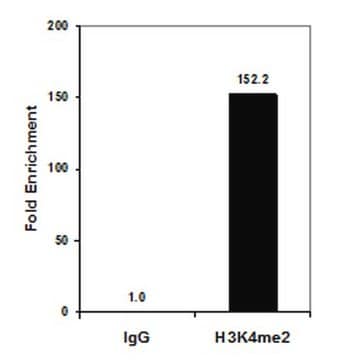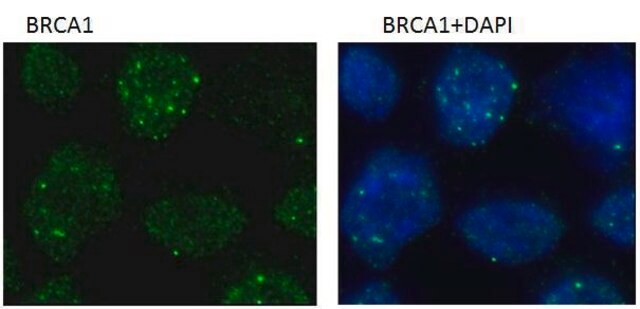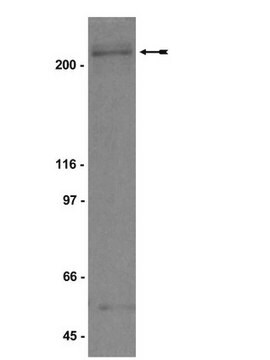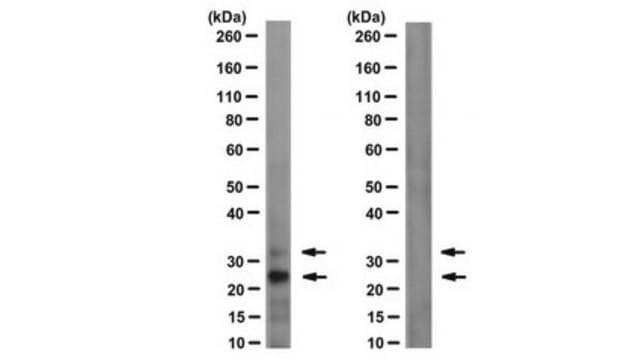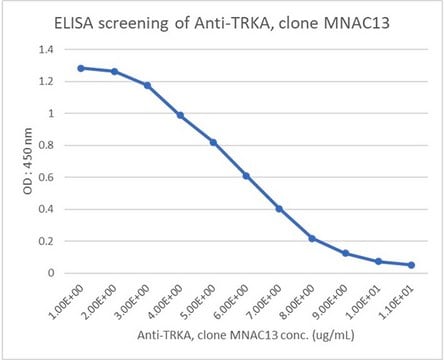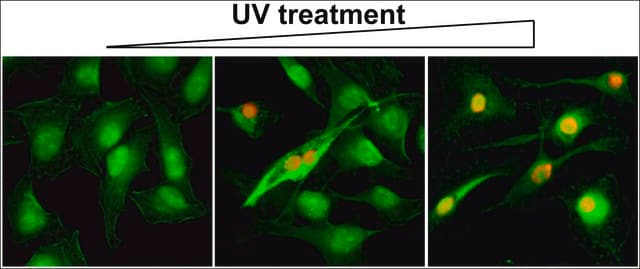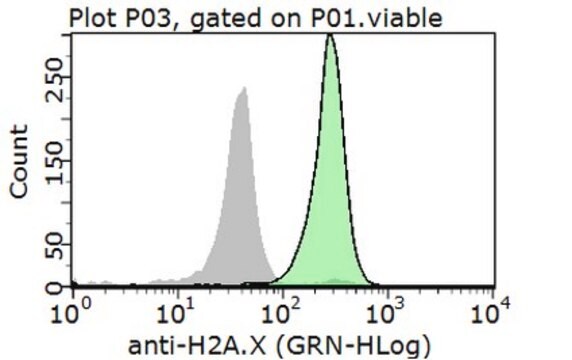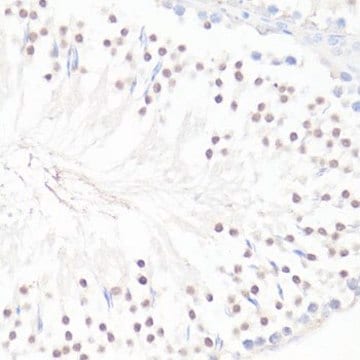05-1572
Anti-MDC1 Antibody, clone P2B11
clone P2B11, from mouse
Sinônimo(s):
Nuclear factor with BRCT domains 1, homologue to Drosophila photoreceptor protein calphotin, mediator of DNA damage checkpoint 1
About This Item
Produtos recomendados
fonte biológica
mouse
Nível de qualidade
forma do anticorpo
purified immunoglobulin
tipo de produto de anticorpo
primary antibodies
clone
P2B11, monoclonal
reatividade de espécies
mouse
reatividade da espécie (prevista por homologia)
chimpanzee (based on 100% sequence homology), bovine (based on 100% sequence homology), human (based on 100% sequence homology)
técnica(s)
immunocytochemistry: suitable
western blot: suitable
Isotipo
IgG1κ
nº de adesão NCBI
nº de adesão UniProt
Condições de expedição
wet ice
modificação pós-traducional do alvo
unmodified
Informações sobre genes
human ... MDC1(9656)
mouse ... Mdc1(240087)
Descrição geral
Especificidade
Imunogênio
Aplicação
Western Blot Analysis: A representative lot was used by an independent laboratory in WB. (Lou, Z., et al. (2003). Nature. 421(6926):957-961.)
Descrição-alvo
forma física
Outras notas
Não está encontrando o produto certo?
Experimente o nosso Ferramenta de seleção de produtos.
Código de classe de armazenamento
12 - Non Combustible Liquids
Classe de risco de água (WGK)
WGK 1
Ponto de fulgor (°F)
Not applicable
Ponto de fulgor (°C)
Not applicable
Certificados de análise (COA)
Busque Certificados de análise (COA) digitando o Número do Lote do produto. Os números de lote e remessa podem ser encontrados no rótulo de um produto após a palavra “Lot” ou “Batch”.
Já possui este produto?
Encontre a documentação dos produtos que você adquiriu recentemente na biblioteca de documentos.
Active Filters
Nossa equipe de cientistas tem experiência em todas as áreas de pesquisa, incluindo Life Sciences, ciência de materiais, síntese química, cromatografia, química analítica e muitas outras.
Entre em contato com a assistência técnica